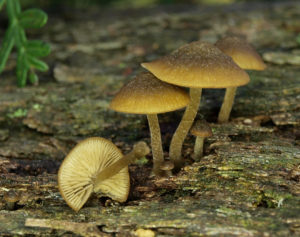Fungimap now recommends the iNaturalist platform, as a fast and accurate way to record and map fungi, and indeed all biota.
Signing on to iNaturalist
You can make records in iNaturalist from a web browser and/or via apps. Here is the app for Mac iOS users and here for Android. You will need to sign up then follow the instructions.
Be sure to join the iNaturalist ‘Fungimap Australia’ community
When submitting an observation, please add it to a “Project” and choose the Fungimap Australia project. You will be prompted to add details of the habitat and substrate – which assists identification. There are already more than 90,000 records of fungi in the iNaturalist Fungimap Australia project!
You can download this handy guide about how to photograph and describe your fungus and upload to our project.
Records on iNaturalist are largely based on images – you submit one or more photos of each observation, along with location and date (which can be extracted from the image metadata, or directly when you use the smartphone app).
iNaturalist is proving to be a valuable learning and reference tool and allows fungimappers to engage with a community of citizen scientists.
For more information about getting started with iNaturalist, check out this useful series of iNaturalist video tutorials.

Some tips for adding fungi records to iNaturalist
- For fungi with a “top” and a “bottom”, such as mushrooms and bracket fungi, unless you can see all the details of pileus, stipe, and lamellae (or pores, etc.), provide at least two images, showing upperside and underside.
- Get as close as you can to the fungus, and fill up the field of view (rather than have the fungus as a small object in the middle of your photo)
- Focus on getting the image in focus
- For tiny fungi, consider one of the macro lens adaptors that are now available for smartphones
If all else fails…
Email fungimap@gmail.com for assistance using iNaturalist, or for additional help with identifying species, please email your photo to fungimapids@gmail.com
The history: Mapping observations of fungi has always been a core objective of Fungimap. Initially, recorders sent in records by mail, then email, and now there is also an on-line form on the Fungimap website, or recorders can submit records on a spreadsheet. Records are stored in-house in a database and, from time to time, data from this are sent to the Atlas of Living Australia.
However, the current methods of submitting records are relatively slow, especially as far as feedback, compared to emerging on-line and app systems.
Here is our analysis of the iNaturalist platform advantages:
- iNaturalist has a growing community of experienced and knowledgeable fungi identifiers providing accurate identification and this means much faster response times than is possible via emails to Fungimap
- the iNaturalist online portal is easy to use and allows:
- observations to be sent from mobile phones or computers
- adding and commenting on identifications
- searching, viewing and comparing other observations of the same species
- collecting project data
- searching and reviewing one’s own observations
- access to geographic distributions maps
- iNaturalist’s reach and expertise is global and its IT support is very helpful
- If at least two people agree the observations become “research-grade” (or if there is disagreement, then a majority is required)
- Research grade observations are transferred to the Atlas of Living Australia at frequent intervals
- Taxon nomenclature is usually up to date with the latest publications and standards.
- People can be ‘followed’ and on-line communities established. The messaging facility allows communications between people without these being attached to observations.
Like any system, iNaturalist is not perfect and we will work on improvements such as:
- encouraging great participation in identifications on iNaturalist, particularly by our experienced identifiers
- alerting recorders to gaps in knowledge in particular areas, and
- improving the quality of records, particularly photos


